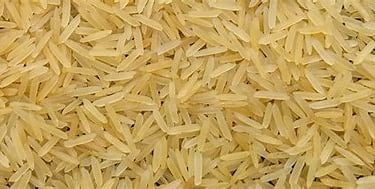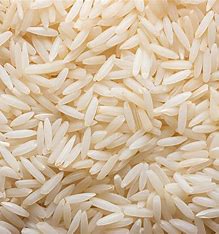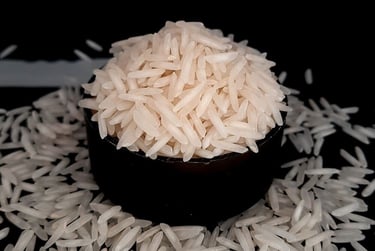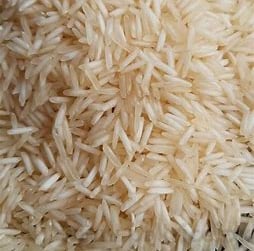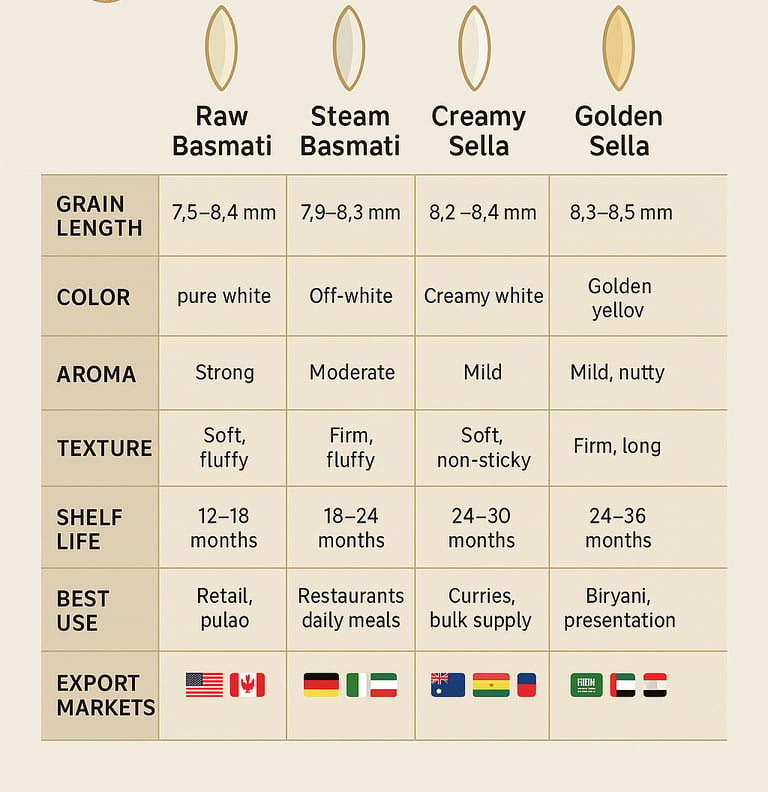The Ultimate Guide to Basmati Rice Varieties: Raw, Steam, Creamy Sella & Golden Sella
Learn the key differences between Raw, Steam, Creamy Sella, and Golden Sella Basmati rice. Compare grain size, color, cooking quality, and export demand — from India’s trusted rice exporter, SKBR Exports.
7/20/20254 min read
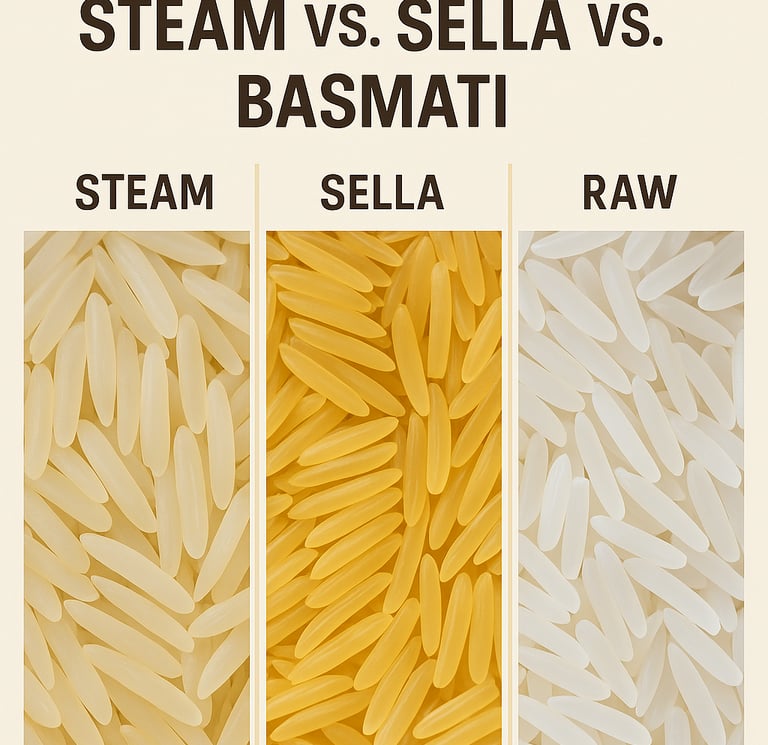

Basmati rice is not just a food grain — it’s a cultural heritage of India. Known for its extra-long grains, distinct aroma, and fluffy texture, Basmati rice enjoys massive demand across the globe.
However, Basmati isn’t just one type — it comes in several processed forms, each suited for specific cooking needs and markets. At SKBR Exports, we deal in every major variant, including:
Raw Basmati
Steam Basmati
Creamy Sella Basmati
Golden Sella Basmati
This guide will help importers, distributors, and chefs choose the right type based on grain size, aroma, texture, and target cuisine.
What is Basmati Rice?
Grown mainly in North India (Punjab, Haryana, Himachal foothills)
Requires a minimum aging of 6–12 months to develop its true aroma
Naturally aromatic due to the compound 2-Acetyl-1-pyrroline (2-AP)
Grain length (before cooking): 6.8 mm to 8.5 mm for premium varieties like 1121 Basmati
1. Raw Basmati Rice (White, Non-Parboiled)
Raw Basmati Rice is the most natural and traditional form of Basmati, processed without any parboiling or steaming. It retains its original bright white appearance and intense fragrance, making it a favorite among consumers who value aroma and softness. This rice is aged to enhance its flavor profile and post-cooking texture.
Key Specifications:
Processing Method: Directly milled after husk removal without steaming
Average Grain Length: ~7.5 mm to 8.4 mm (1121 Basmati standard)
Color Appearance: Polished bright white
Aroma Profile: Strong and natural Basmati fragrance
Cooking Texture: Soft, aromatic, and slightly sticky when freshly cooked
Shelf Life: 12 to 18 months (when stored in cool, dry conditions)
Common Applications:
Preferred in households for daily meals
Suitable for preparing pulao, jeera rice, and light fried rice
Ideal for packaged consumer retail
Major Importing Regions:
USA, UK, Canada, UAE, Australia
2.Steam Basmati
Steam Basmati Rice is carefully processed by steaming the paddy before dehusking. This technique ensures greater grain integrity, enhanced cooking characteristics, and improved resistance to breakage. It offers a subtle aroma and a firm texture that holds up well in food service environments.
Key Specifications:
Processing Method: Steamed in husk before milling
Average Grain Length: ~7.9 mm to 8.3 mm
Color Appearance: Off-white to ivory
Aroma Profile: Mild and balanced
Cooking Texture: Fluffy, separate, and slightly firm
Shelf Life: 18 to 24 months (under optimal storage conditions)
Common Applications:
Widely preferred by restaurants and hotels for daily meals
Ideal for rice bowls, buffet service, and mixed rice dishes
Major Importing Regions:
Europe, Singapore, Middle East
Best For: Food chains and commercial kitchens needing consistency
3. Creamy Sella Basmati Rice (White Sella)
Creamy Sella Basmati Rice is a lightly parboiled rice with a signature creamy-white hue and refined finish. It is known for its enhanced durability, long shelf life, and excellent cooking characteristics. The grains retain their structure while offering a soft, non-sticky texture ideal for bulk cooking and food service operations.
Key Specifications:
Processing Method: Mildly parboiled with a creamy polish
Average Grain Length: ~8.2 mm to 8.4 mm
Color Appearance: Pale cream to milky white
Aroma Profile: Mild, subtle Basmati aroma
Cooking Texture: Soft, fluffy, and stable post-cooking
Shelf Life: 24 to 30 months (when stored under optimal conditions)
Common Applications:
Extensively used in commercial kitchens and catering services
Ideal for preparing rich curry dishes, gravies, and festive meals
Suitable for institutional meal programs and ready-to-eat packs
Major Importing Regions:
Canada, Europe, Mauritius, Kenya
4. Golden Sella Basmati Rice
Golden Sella Basmati Rice is a premium, parboiled variant renowned for its golden hue and superior cooking resilience. This variety undergoes an intensive parboiling process that enhances grain strength, minimizes breakage, and improves nutritional retention. Its rich appearance, long grain size, and firm texture make it the preferred choice for high-end culinary applications, particularly in biryani and ceremonial dishes.
Key Specifications:
Processing Method: Intensively parboiled with golden polish
Average Grain Length: ~8.3 mm to 8.5 mm (among the longest in the Basmati category)
Color Appearance: Distinctive golden yellow
Aroma Profile: Mild and slightly nutty
Cooking Texture: Firm, non-sticky, and elongated after cooking
Shelf Life: 24 to 36 months (with proper dry storage)
Common Applications:
Premium biryani preparations in restaurants and hotel chains
Suitable for airline meals, catering services, and festive banquets
Frequently used for dishes requiring firm, separate grains with rich visual appeal
Major Importing Regions:
UAE, Saudi Arabia, Qatar, Iraq, Iran, West Africa
Quick Comparison Table
Why Import Basmati from SKBR Exports?
At SKBR Exports, we are more than suppliers — we are your rice partners. Our rice is:
Tested for purity, grain length, moisture & cooking quality
Available in custom export packaging (5kg to 50kg)
Shipped globally with timely logistics & documentation support
Certified by FSSAI, APEDA, ISO-compliant mills
Ready to Import Premium Basmati?
Whether you're a wholesaler, food brand, hotel group, or supermarket chain, SKBR Exports ensures bulk quantities, consistent quality, and transparent pricing.
Email: info@skbrexports.com
Website: skbrexports.com
WhatsApp/Call: +91-8283862997
Let’s deliver India’s finest rice to your market — grain by grain.
